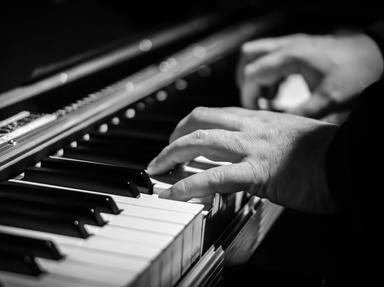Quiz Answer Key and Fun Facts
1. Do all pianos have 88 keys?
2. What minor key signature has no accidentals (sharps or flats)?
3. Who is believed to have invented the modern piano?
4. What is another name for the sustain pedal?
5. Is C the highest note on all pianos?
6. Pianos are usually tuned to standard concert pitch which is what?
7. How many strings does the hammer usually strike to sound any one note?
8. Who wrote piano music especially for a famous amputee of World War I?
9. What do you call a scale where you play every white and every black key?
10. What is Bach's Well-Tempered Clavier?
Source: Author
Noleen
This quiz was reviewed by FunTrivia editor
ertrum before going online.
Any errors found in FunTrivia content are routinely corrected through our feedback system.

